Dress for the Job You Want
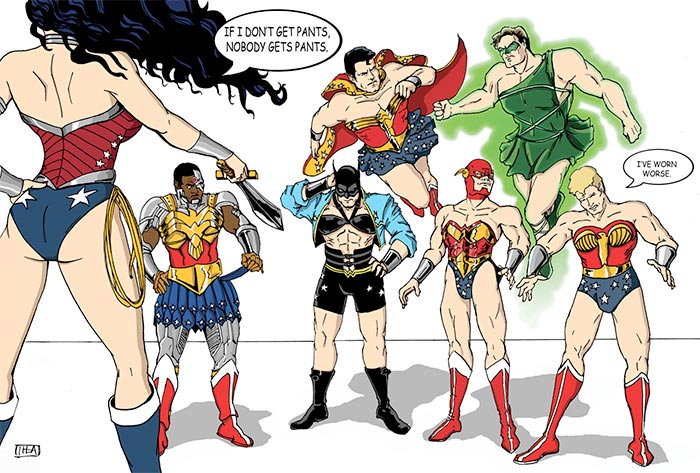 Costumes are usually essential to the superhero genre, and I grew up in the 70s and 80’s, when color, spandex, and no small amount of camp were in style.
Costumes are usually essential to the superhero genre, and I grew up in the 70s and 80’s, when color, spandex, and no small amount of camp were in style.
Thinking about those costumes now, I don’t think they’d work well for some of today’s versions of our favorite heroes. Henry Cavil’s Superman and Christian Bale’s Batman wouldn’t make sense in the bright, optimistic colors given to Christopher Reeve and Adam West, or even Michael Keaton’s Batman costume, which was indeed black. We live in darker, more jaded times I think, and we need our heroes to reflect our times and address our struggles in order to be meaningful, even if they’re wearing spandex tights. 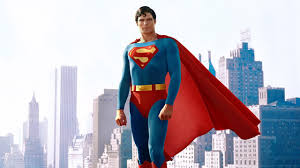
Below are some questions I was given ahead of a panel I was scheduled to participate in about superhero fashion from last month. I missed it because of some technical glitches, but I do these discussions and panels periodically. Stay tuned on my Facebook Author Page and my Superheroes in Love Group (and be sure to join it—it’s lots of fun!) so you don’t miss the next one!
What are some of the worst superhero costume mistakes you’ve seen?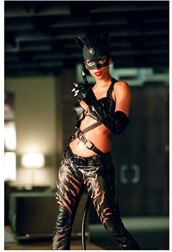
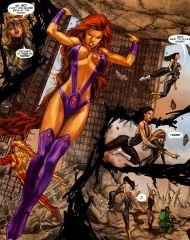 Definitely on the list are Starfire’s New 52 costume and Halle Berry’s Catwoman outfit. They’re the most blatantly fetishized, worst-offenders I’m aware of. Those costumes reduce the women from powerful figures to be reckoned with to women driven by irrationality and sex appeal.
Definitely on the list are Starfire’s New 52 costume and Halle Berry’s Catwoman outfit. They’re the most blatantly fetishized, worst-offenders I’m aware of. Those costumes reduce the women from powerful figures to be reckoned with to women driven by irrationality and sex appeal.
I also find the Wonder Woman costumes after the Marston era and before Gadot (usually swimsuits with boots) problematic for the same reason. I want to note here that while the 1941 culottes were too flowy to be practical, the shorts in 1942 were almost perfect (see accompanying picture). Putting aside the strapless top she’s almost always stuck with (we can ascribe its staying up to “magic” I guess, since it’s such an iconic look by now), that costume made the most sense in terms of the background she was given and the propaganda she was meant to represent. The gradual reduction in amount of skin covered harkens to the same problem as with Starfire and the others. I did like that by 2006, her arm bracers were larger and more functional, and the artists ditched the high heels. Having said that, I never understood as a kid why Wonder Woman, a powerful warrior goddess, never got to wear pants or warm clothing.
Actually, most of the female characters in DC & Marvel seem to have low-cut skin tight 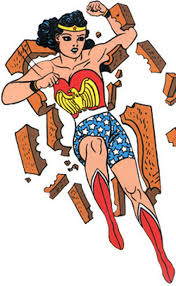 costumes that accentuate sexuality rather than function as a matter of course. Even though most examples aren’t as extreme as Berry’s or Starfire’s, the
costumes that accentuate sexuality rather than function as a matter of course. Even though most examples aren’t as extreme as Berry’s or Starfire’s, the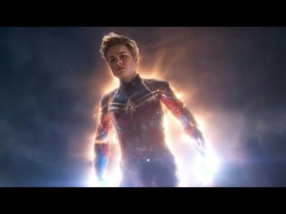 costumes are meant to heighten the sex goddess angle more than anything else. The result is to undermine their roles as leaders and protectors. Captain Marvel’s most recent movie persona was a step in the right direction, but so far, she appears to be an exception. While male characters certainly have had their share of unfortunate costumes, I believe women have fared far worse.
costumes are meant to heighten the sex goddess angle more than anything else. The result is to undermine their roles as leaders and protectors. Captain Marvel’s most recent movie persona was a step in the right direction, but so far, she appears to be an exception. While male characters certainly have had their share of unfortunate costumes, I believe women have fared far worse.
How much attention do you give to your characters’ costume seeing as how it’s on the page and not visual?
In a book, it becomes more important than ever to paint the picture of what’s happening for the reader, since they can’t read your mind as the author. So, the costume details are crucial. The way you portray characters indicates so much about the general tone of the entire story concept.
I pulled ideas for Nina’s costume partially from Sumerian and other ancient dress, in addition to embellishing with ideas from Dungeons and Dragons (the idea of “magic” leather armor that allows full range of motion for example).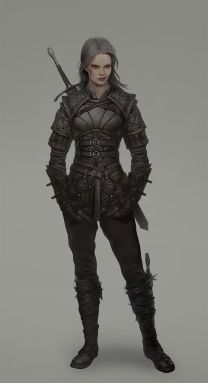
Costuming is especially important with women characters because they’re the most prone to overt sexualization. Having 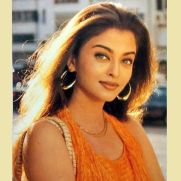 said that, the technique of providing those crucial details in a way that doesn’t halt the story but rather, continues the action (or at least allows the action to continue) takes some practice.
said that, the technique of providing those crucial details in a way that doesn’t halt the story but rather, continues the action (or at least allows the action to continue) takes some practice.
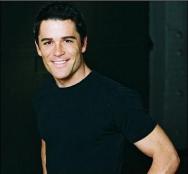 Have you ever commissioned fan art of your heroes in their gear?
Have you ever commissioned fan art of your heroes in their gear?
No, although I thought about it for the purposes of covers. I do have a Pintrest page with boards dedicated to which actors and actresses (well, really only one actress) would play the characters in my imaginary movie of the books! A young Aishwara Rai is almost exactly how I imagine Nina. A younger Yanick Bisson would make a good Daniel likeness, I think. Another possibility, in spite of his not aging much to begin with, could be a younger Paul Rudd.
How do you make your costumes visual for your readers?
Physical and sensory detail. I try to incorporate as many senses as possible, as they can become relevant. This includes things like how they influence movement during different actions, whether they are uncomfortable in some way or attract the wrong kind of attention, and so on. This is part of a larger issue about how to make sensory details work organically in any scene. I for one am not a fan of the “he looked in the mirror” or other kind of “saw his reflection” trope for introducing how a character looks. A superhero (or any character) wouldn’t usually think in terms of what color they were wearing (or any physical features) unless that was somehow relevant to the scene. So, we can know my character Miriam’s costume is silver because she can’t trail the villain 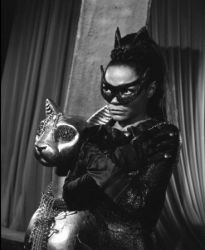 incognito: Even in the shadows of the dark alley, her metalic, silver unitard glinted in the dim light, attracting the attention of a famiy of tourists who raced toward her with cameras. I wouldn’t say we know her costume’s color because: She ran through the crowd in her skin-tight, silver hero costume. The latter is too artificial sounding to me.
incognito: Even in the shadows of the dark alley, her metalic, silver unitard glinted in the dim light, attracting the attention of a famiy of tourists who raced toward her with cameras. I wouldn’t say we know her costume’s color because: She ran through the crowd in her skin-tight, silver hero costume. The latter is too artificial sounding to me.
Favorite superhero costume? Favorite villain costume?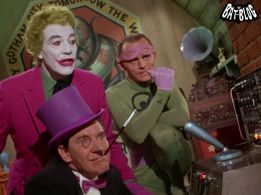
I like the 1942 Wonder Woman (above) in the sense that although it’s fetishized, there’s a some degree of context behind it in terms of the culture from which she originally came I feel the same way about Thor, Iron Man, and Captain America’s costumes. And, they’re just fun, which is important most of the time as well for most superhero concepts and stories. To that end, as far as pure fun, not many can beat the costumes from the 1960’s Batman series in terms of good and bad guys. Otherwise, like my characters, I prefer an understated look, like Jessica Jones or Constantine (below).
Do you prefer a team uniform/coordinated looks or do you like every hero in their own individual style?
I tried very hard to avoid the camp factor when I came up with costumes. My themes are heavy and serious, and I didn’t want to cheapen or undercut those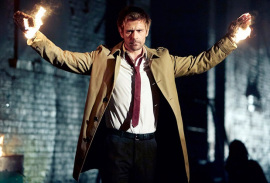
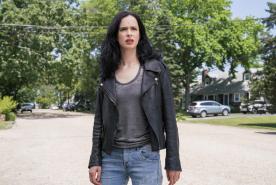 ideas with easily recognizable or traditional comic book style looks. Plus, the team isn’t part of any official government organization; in fact they can be a bit rag-tag, and they try to keep as low-profile as possible even though flying and monster-fighting are parts of their lives. The last thing any of them want is more of a public persona than they already have due to their powers. I have to say, I do appreciate and enjoy the more colorful, stylized costumes in others’ work though.
ideas with easily recognizable or traditional comic book style looks. Plus, the team isn’t part of any official government organization; in fact they can be a bit rag-tag, and they try to keep as low-profile as possible even though flying and monster-fighting are parts of their lives. The last thing any of them want is more of a public persona than they already have due to their powers. I have to say, I do appreciate and enjoy the more colorful, stylized costumes in others’ work though.
How does sub-genre affect your costume choice?
I don’t have a subgenre as much as I do a balance between several genres. Aside from superheroes, the most obvious is romance. But, because I’m actually  not a fan of many romance tropes and clichés, I deliberately went against the cliche and avoided the muscle-rippling, breast and thigh accentuating costumes that scream “romantic lead” or “hot.” I also include time travel in my books, and Daniel’s costume harkens back a bit to his original, corporate-military trappings from the 1930’s (although far less flashy than Captain America’s).
not a fan of many romance tropes and clichés, I deliberately went against the cliche and avoided the muscle-rippling, breast and thigh accentuating costumes that scream “romantic lead” or “hot.” I also include time travel in my books, and Daniel’s costume harkens back a bit to his original, corporate-military trappings from the 1930’s (although far less flashy than Captain America’s).
In that same vein, Abioye dresses in a kind of understated, classy fashion. Daniel comments that Abioye usually looks like he’s just stepped out of a men’s fashion magazine, even in jeans and a t-shirt. This style owes itself to his social status. But, he also wears a scabbard across his chest to carry an intimidating-looking sword on this back most of the time, per his ancestry’s traditions. Both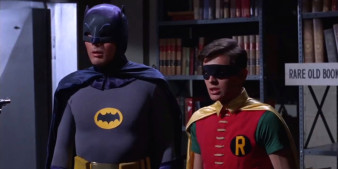 his costume and Daniel’s (and obviously Nina’s) contain elements of an era or heritage that’s meaningful or symbolic to them.
his costume and Daniel’s (and obviously Nina’s) contain elements of an era or heritage that’s meaningful or symbolic to them.
The final genre I include that I think really determined my dress choices was literary though. The brightly colored, highly stylized costumes we see in some superhero stories wouldn’t work well in my own books. I think it would be incongruous, given my characters’ issues and personalities, to play up their public roles in costume.
- How do you tailor your superhero’s costume to their needs and powers?
I thought about what the characters’ powers were, and how best to accommodate their use. That brings me back to characters like Wonder Woman and Starfire: what purpose do the skimpy costumes serve? How do they enhance or at least not hinder the character’s actions? I also took into account ways their costumes might create interesting hinderances to either their jobs or their character arcs.
For example, Daniel is mostly involved in hand-to-hand combat, so he wears a kind of high-tech field military costume that allows him some protection as well as range of motion. It’s black, which makes it a little easier for him to blend into a crowd and harder for people to hit if he’s fighting at night. However, because of his celebrity status and the fact that his uniform, while utilitarian, is also custom-made for him as a heroic symbol, he gets noticed often anyway. The uniform is a kind of double-edged sword.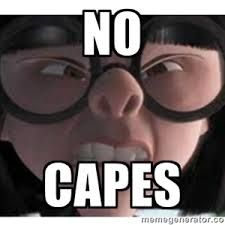
Speaking of which, Abioye is rarely without his sword, which he carries in a scabbard on his back. People who don’t know him tend to keep their distance because of that. He’s one of my most likeable side characters—readers seem to love him—but he’s 6’1” of solid muscle, he’s black and deep-complexioned, and usually ends up sitting all alone when he’s out and about because no one wants to get near him. His powers and obligations are the source of his loneliness, so he doesn’t socialize outside his circle of colleagues. He does have leather armor similar to the kind Nina has, with his family’s insignia on the chest. He only wears it when he knows ahead of time that he’ll need it though. He stands out enough already, as far as he’s concerned.
Kevin’s costume isn’t really a costume at all; his armor is part of his physiology. Not only does it protect him and offer him powers like strength, a ranged attack, and flight; its real purpose is for him to function on a daily basis. I go more deeply into this in W.I.S.E. Men, which should come out by the end of this year. It also is intensely painful even when he isn’t actively using the costume. Everything about Kevin is a difficult reminder of who and what he is, even more so when he has to activate his powers.
Miriam has a speedster costume, which means it’s form-fitting and made from a special, silver-colored material designed to work with her metabolism so she doesn’t overheat and collapse when she runs. She almost never wears dresses or skirts since if she’s needed quickly, she’ll have to tear off her street clothes and run. They’re just going to get ruined and constrain her movement otherwise. She pretends she hates that kind of thing anyway, but when she dresses up, she secretly relishes the chance to look more normal and classically feminine. I decided to make the special material designed for her powers hard to conceal precisely to highlight that conflict for her.
Graham doesn’t really have a costume at all. He’s okay in one-to-one combat, but his real function is as the team’s ranged attacker and stealth person. He wears whatever is in his closet that seems the most appropriate for whatever he’s likely to have to do that day. Having watched his colleagues grapple with having to look a certain way or take unusual traits into account, he’s grateful that he does not have that problem.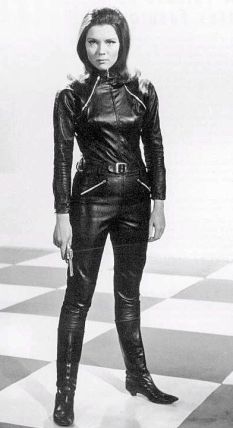
The only costume which has significant symbolism is Nina’s because she is an ancient goddess. Even then, her costume is designed for maximum movement and protection. It isn’t skimpy like Wonder Woman’s or super-tight like Storm’s or Black Widow’s. I based it on a cross between Diana Rigg’s Emma Peel costume and Dungeons & Dragons-style, full-bodied leather armor (with a magical element that makes it fit very well and not limit her range of motion in any way). There are symbols and colors on her costume that indicate her status and her gods but beyond that, it’s a matter of function over form. Nina also is the only one who doesn’t have to deal with the problems of changing from street clothes to her costume. Because she’s supernatural, she can change at will, instantaneously. This also becomes an indirect cause of an identity crisis for her as she attempts to be more human.
I wanted the characters to grapple with their purpose in life, given how strange they are compared to regular people. None of them asked for their powers or roles. So, there are aspects of the costumes that are sometimes, like in Kevin’s case, literally painful reminders of the idea that they will never be normal. In Daniel’s case, it’s the U.S. Army insignia and Fisher Corporation logo on his sleeve (which are the source of both Kevin’s ire and his insulting nickname for Daniel) that, along with the concentration camp numbers on his arm, remind him of his obligations. Ty has to avoid wearing anything too nice most of the time since he explodes and re-materializes. I wanted the characters’ greatest outward strengths to be impediments to their internal and interpersonal conflicts and designed the costumes more or less accordingly.
Because superheroes largely are based on mythological heroes, deitites, and royalty, they are mean to stand out and be noticed in order for others to revere them as powerful protectors. I discuss this idea in last month’s blog. There’s something about a uniform that implies importance and status. In my own work, the characters understand their powers make them different, but none of them want recognition or reverence. As far as they’re concerned, their powers gave a more serious purpose in life, whether they chose it or not. Costumes, as I mentioned, reflect tone and theme. My characters’ costumes generally reflect the conficts within their arcs. They aren’t typical superheroes, and I very much like to push boundaries and write against the grain of convention.